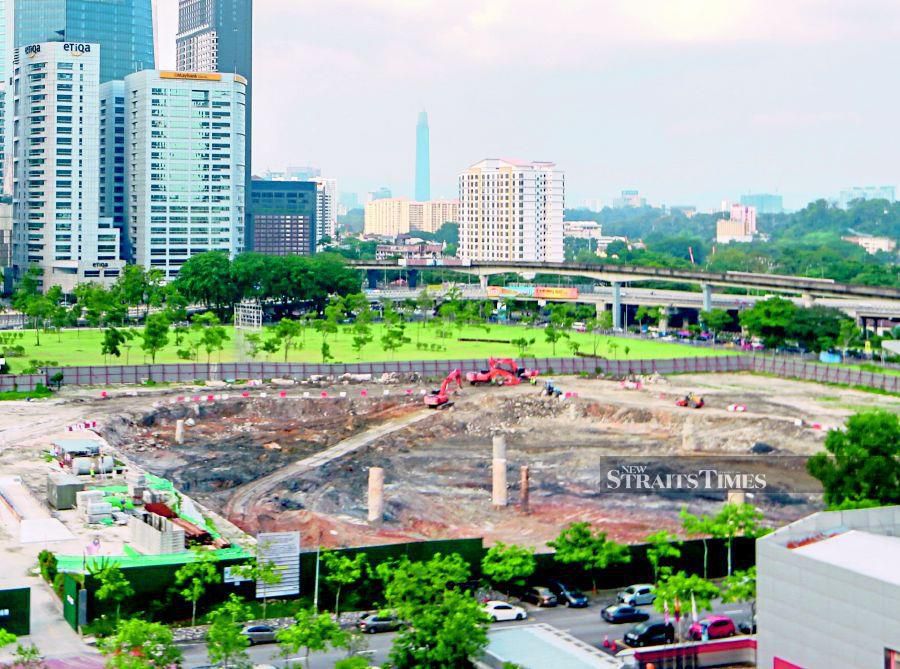

LETTERS: Industry 4.0 is a much-talked-about buzzword, referring to the Fourth Industrial Revolution.
It comprises growing trends in technology such as robots, cloud computing, the Internet of Things, 3D printing, system integration, cybersecurity, augmented reality, automation, simulation and artificial intelligence (AI).
The construction industry is starting to see the impact of Industry 4.0, with new technologies pushing for industry penetration and upgrading of current ones.
Some of the major advancements in the construction industry are Building Information Modelling (BIM), drone technology, Industrialised Building System (IBS) and green building construction.
The advantages of using BIM technology include improvements in the efficiency of planning and the designing stage of the construction project.
The 3D visualisation also has the ability to provide details of every infrastructure and items within it.
Building materials and quantities can be extracted from BIM, which will improve the engineering planning and design efficiency.
The use of drones in construction site surveying has expedited ground survey processes. Tedious ground survey is now easier, providing ground as well as overview image detailing.
The use of drones in project and site monitoring offers numerous advantages in construction applications (e.g. site mapping, inspection, reporting, client updates and project monitoring).
Drones reduce the need for engineers to visit sites and, at the same time, increase the frequency of location checking.
IBS is a construction technique whereby components are manufactured in a controlled environment leading to high-quality products and minimum waste.
The factory work environment is easier to control and ensures faster completion with the introduction of prefabricated components to replace onsite fabrication.
The use of IBS technology will result in a safer, cleaner and more organised site due to the reduction of construction waste. Dependency on foreign workers is also reduced.
The construction of the Huashenshan Hospital in Wuhan, China — that was completed in 10 days — is an excellent example of the IBS or modular construction technology.
A green building inherently has a low carbon footprint, reduces environmental impact and enhances the indoor environment, which improves the social wellbeing of the occupants.
The Green Building Index (GBI) and GreenRE are two of Malaysia’s industry-recognised green rating tools for buildings to promote sustainability in the built environment
Major challenges faced by construction industries in moving towards Industry 4.0 adoption include lack of awareness and its benefits; no clear comprehensive policy and coordination on Industry 4.0; lack of targeted incentives; and mismatch skills set as well as lack of right talent/human capital.
In the construction industry, there is still a misperception that the adoption of new technologies will have cost implications.
However, improvements in efficiency and productivity will eventually add value and improve construction projects.
There is no clear comprehensive policy and coordination on Industry 4.0 in Malaysia.
The National Policy on Industry 4.0 focuses only on the manufacturing sector.
There is an urgent need to formulate a clear road map and national policy to provide a direction for construction and building industry players and streamline future programmes related to IR 4.0.
The formulation of this policy should include all relevant stakeholders.
The lack of targeted incentives for companies to move to Industry 4.0 can be addressed by a comprehensive programme provided by the government to help the industry.
On the issue of mismatch of skills set and lack of talent/human capital — engineers, architects and quantity surveyors, among them — professional bodies such as The Institution of Engineers Malaysia, Technological Association Malaysia and Master Builders Association Malaysia can play a role to facilitate and provide training.
Construction industry players must consider the evolving needs of the industry. They have to embrace technology and innovations to improve decision-making and work procedures.
The risk of not doing so will result in the realisation suddenly that their processes are no longer needed and a competitor has redefined the product and the industry.
WONG CHEE FUI
Fellow, The Institution of Engineers Malaysia
